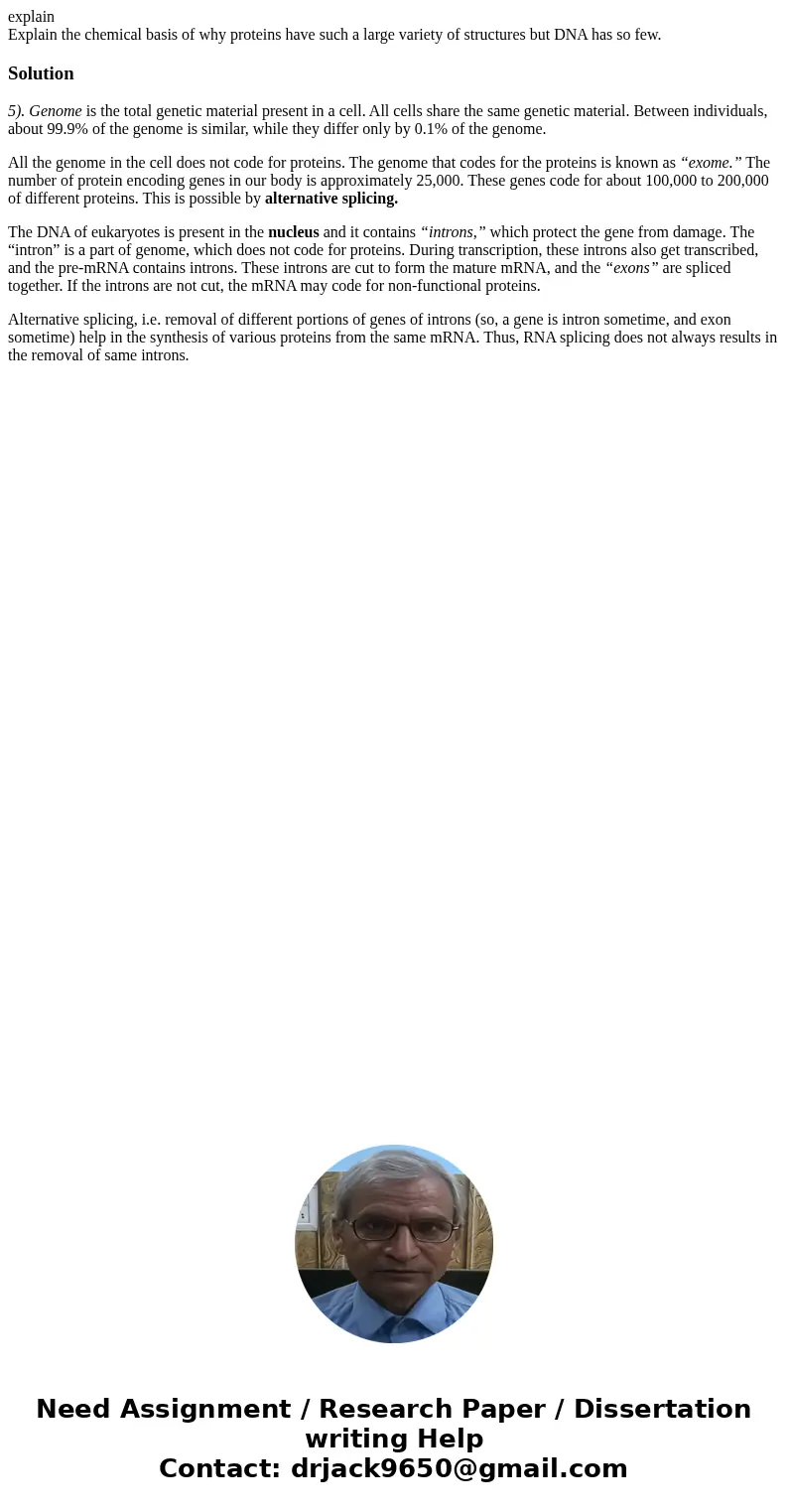explain Explain the chemical basis of why proteins have such
Solution
5). Genome is the total genetic material present in a cell. All cells share the same genetic material. Between individuals, about 99.9% of the genome is similar, while they differ only by 0.1% of the genome.
All the genome in the cell does not code for proteins. The genome that codes for the proteins is known as “exome.” The number of protein encoding genes in our body is approximately 25,000. These genes code for about 100,000 to 200,000 of different proteins. This is possible by alternative splicing.
The DNA of eukaryotes is present in the nucleus and it contains “introns,” which protect the gene from damage. The “intron” is a part of genome, which does not code for proteins. During transcription, these introns also get transcribed, and the pre-mRNA contains introns. These introns are cut to form the mature mRNA, and the “exons” are spliced together. If the introns are not cut, the mRNA may code for non-functional proteins.
Alternative splicing, i.e. removal of different portions of genes of introns (so, a gene is intron sometime, and exon sometime) help in the synthesis of various proteins from the same mRNA. Thus, RNA splicing does not always results in the removal of same introns.

 Homework Sourse
Homework Sourse